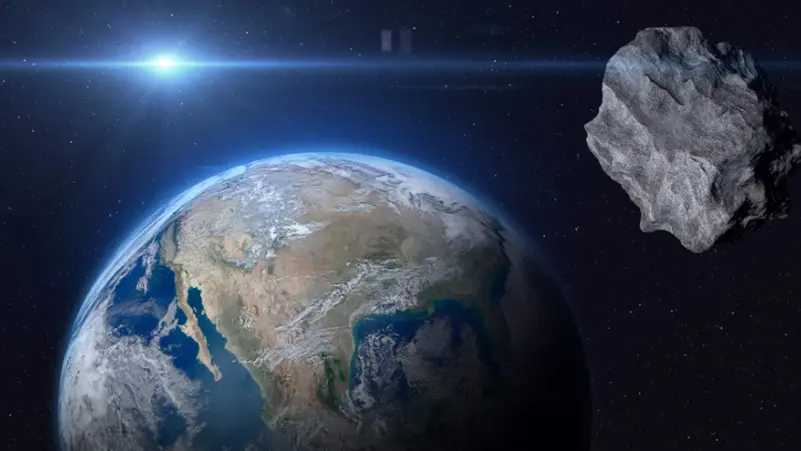To save humanity, a vehicle will deliberately collide with an asteroid to divert its course
On Monday, the US space agency, NASA, will attempt a feat that humanity has not seen before, deliberately smashing a spacecraft with an asteroid to divert its course, in a major test of humanity's ability to prevent cosmic bodies from destroying life on Earth.
The Double Asteroid Reduction Test (DART) spacecraft was launched from California last November and is rapidly approaching its target, which it will hit at a speed of 23,000 km. As for its size, it is smaller than the size of a car, with a diameter of about 160 meters.
There is no need to panic. Neither the asteroid Demorphos nor the larger asteroid that orbits Didymus poses any threat because they orbit the sun at a distance of about seven million miles from Earth at their closest point. But NASA considered it important to carry out this mission before it was actually needed.
"It's an exciting moment not only for the agency but also for space history and human history," Lindley Johnson, an official in the NASA Planetary Defense Division told reporters at a conference on Thursday.
And if everything goes according to plan, the collision between the spacecraft and the asteroid is expected to occur at 19:14 ET (23.14 GMT) and can be followed up via NASA's live broadcast.
By colliding with Demorphos, NASA hopes to push it into a smaller orbit that will save ten minutes from the time it takes to circle Didymos, which is currently 11 hours and 55 minutes, a change that will be detected by ground-based telescopes in the following days.
This experience will make what was previously tried only in science fiction, especially in films such as “Armageddon” and “Don’t Lock Up”, a reality.
Technological challenge
In order to hit this small target, the vehicle will fly autonomously during the last four hours of flight, like a self-guided missile.
And its cameras called “Draco” will take the first pictures of the asteroid, whose shape is not yet known (round or rectangular…) at the last moment. At a frame rate per second, it will be able to be seen directly on Earth with a delay of only about 45 seconds.
Minutes later, a shoebox-sized satellite called LICIACube, which separated from Dart two weeks ago, will pass near the site to capture images of the impact and ejecta - crushed rocks thrown out by the impact. The LICIACube images will be sent out in the following weeks and months.
Also, a group of telescopes, on Earth and in space, including James Webb, will monitor this event, and may be able to see a luminous cloud of dust.
Finally, the European Hera probe, scheduled to launch in 2024, will monitor Demorphos closely in 2026 to assess the consequences of the collision and calculate the mass of the asteroid for the first time.
The Threat Exists
Very few billions of asteroids and comets in the Earth's solar system are considered a threat to the planet, and none of them will be in the next 100 years.
However, Thomas Zurbuchen, chief scientist at NASA, said, "I guarantee you that if you wait long enough, there will be something."
So far, about 30,000 asteroids of all sizes have been observed near Earth (they are called near-Earth objects, meaning that their orbit intersects with the orbit of the planet humans). And finds about three thousand new species every year.
According to scientists, all asteroids with a length of a kilometer or more have been observed almost completely. But they estimate that they have detected only about 40% of asteroids measuring 140 meters or more, and these have the potential to devastate an entire region.
If the Dart misses its target, the vehicle will have enough fuel for another try within two years. But if it succeeds, it would be a first step toward a world capable of defending itself from an existential threat in the future, said Nancy Chabot of the Johns Hopkins University Applied Physics Laboratory.
http://tira1.com/archives/481999?fbclid=IwAR3jMWWWXM-FVFQ-XxVZLQZKF9sMp2t3oLulUgsEhO4_sJBA2CCDaiF9fPM


